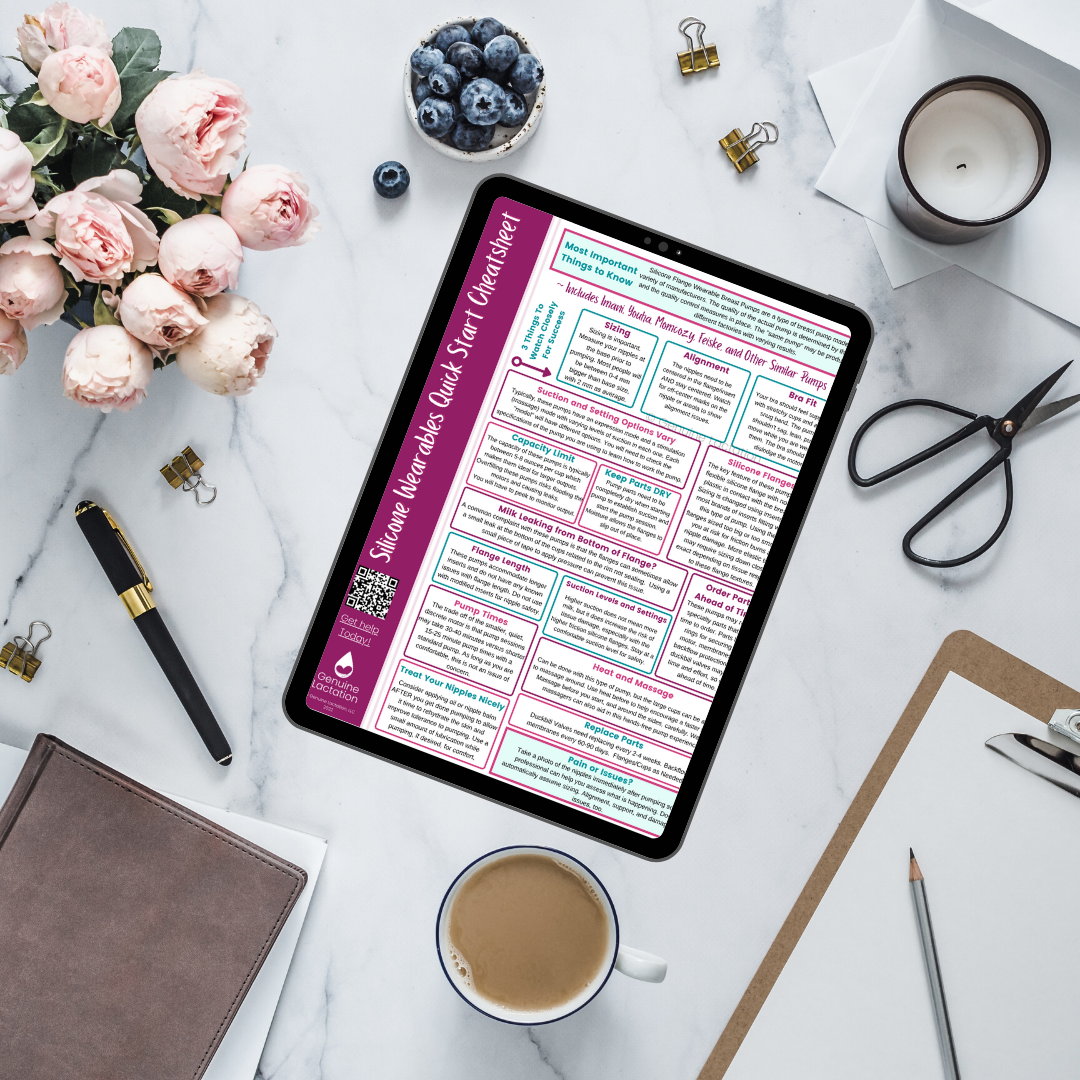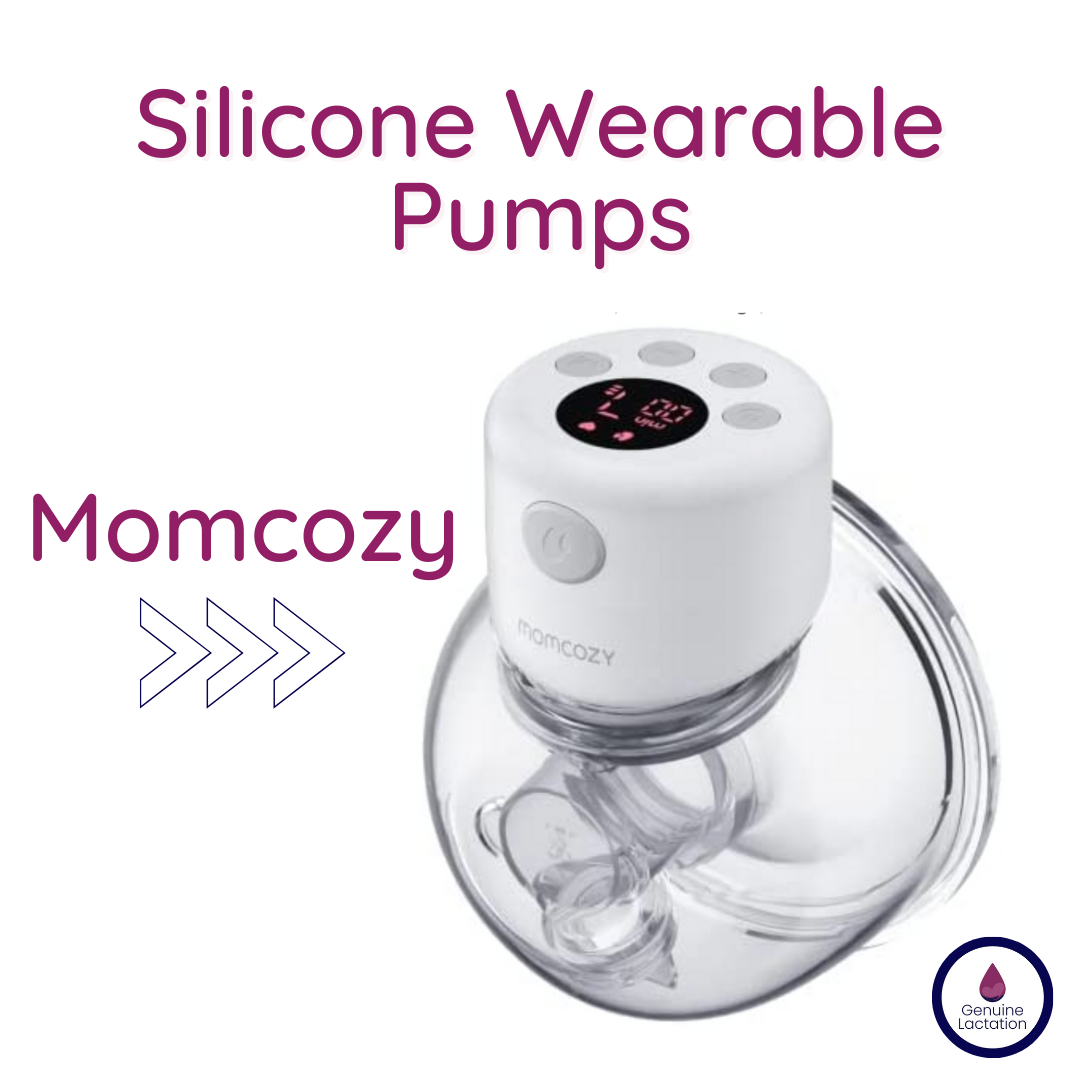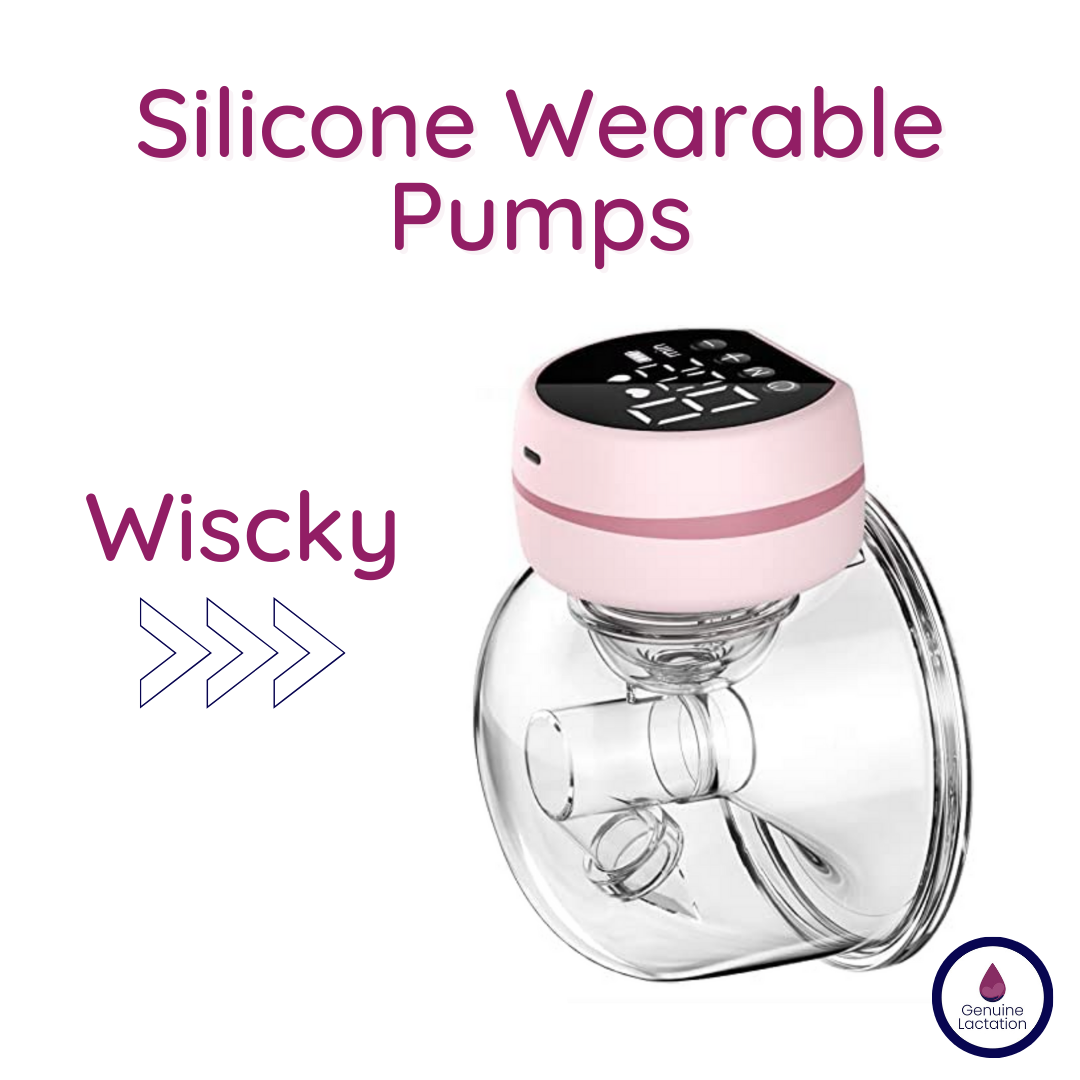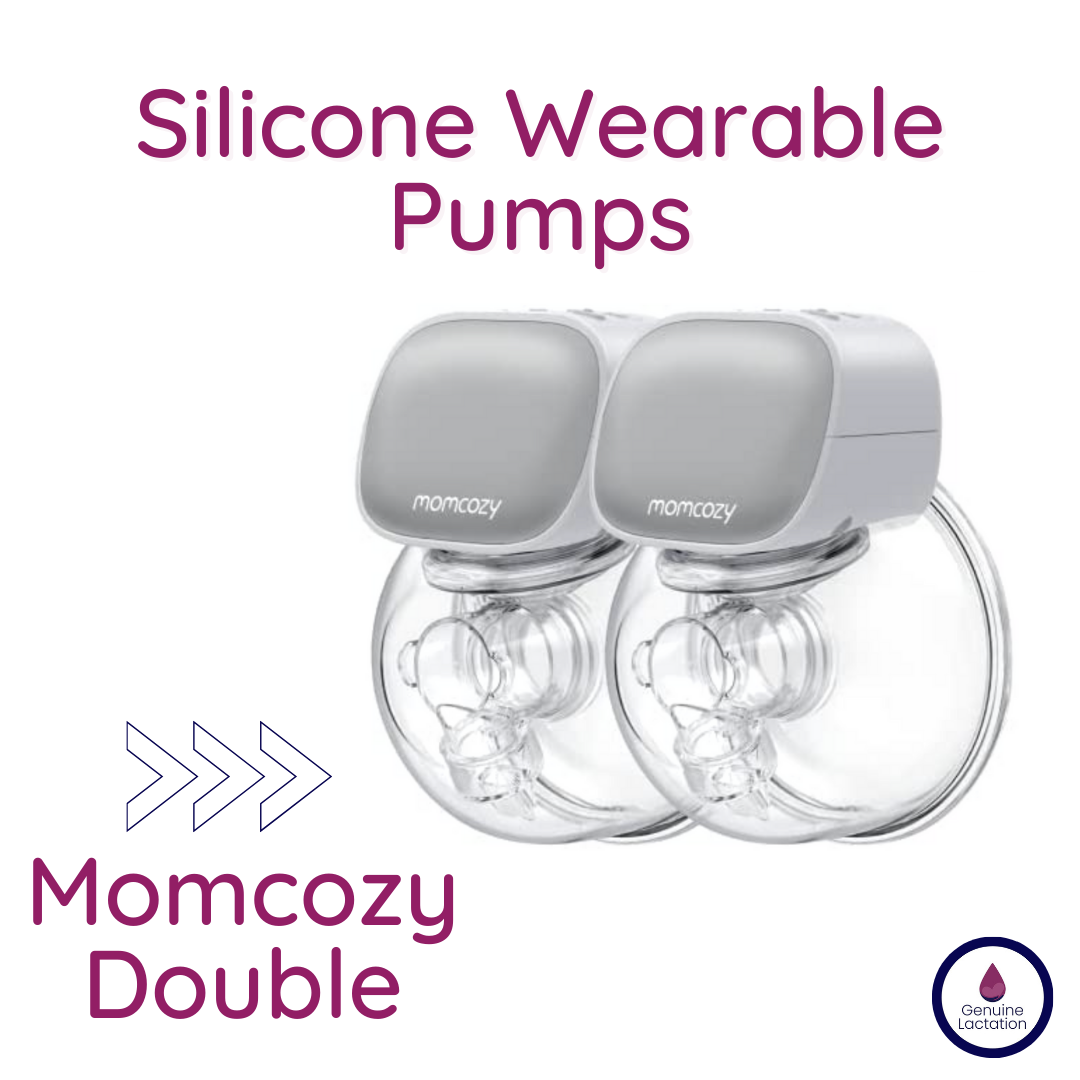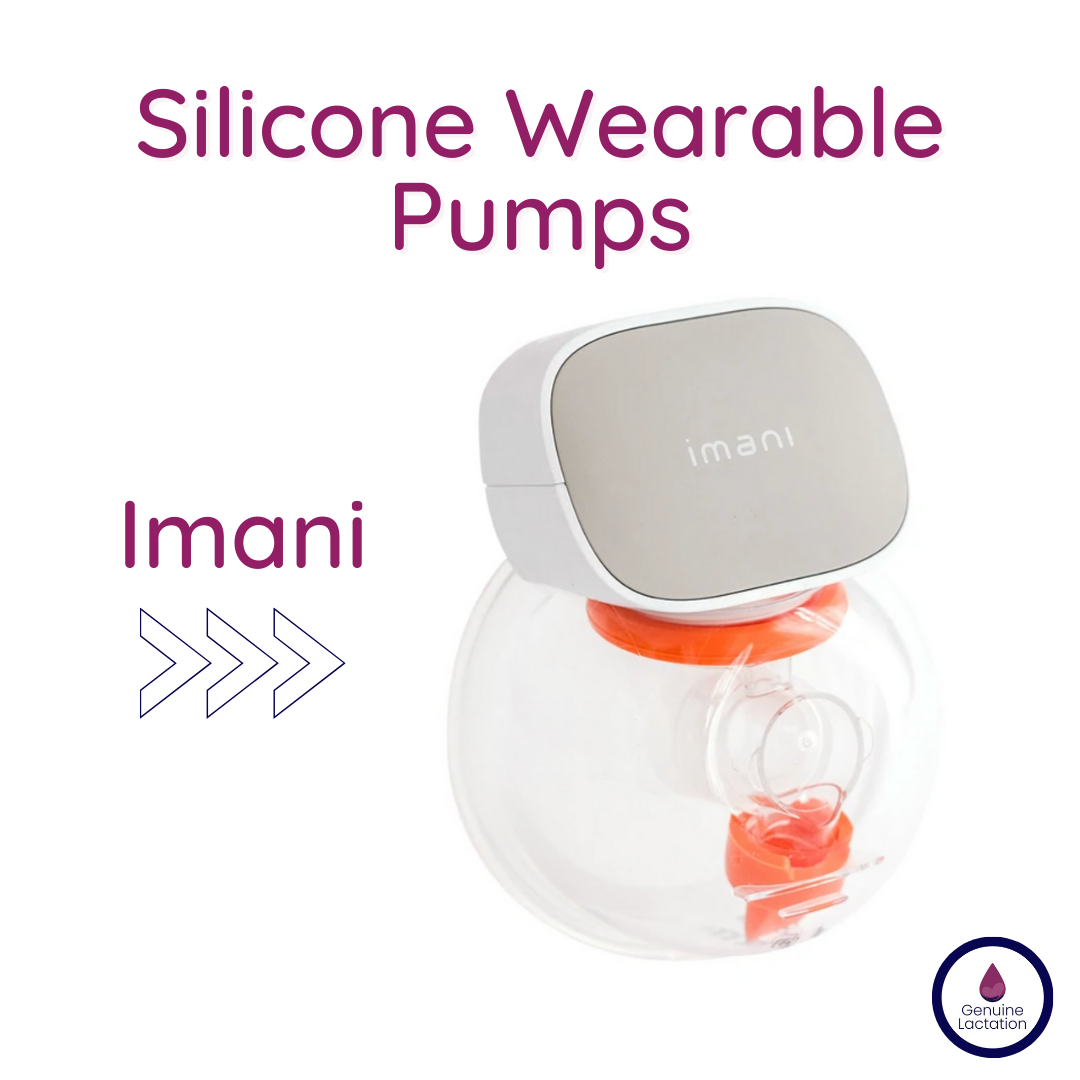What are Silicone Flange Wearable Pumps?
Free Download: Silicone Wearables Quick Start Cheatsheet
Relatively new to the breast pump market, it’s hard to find a good way to describe these pumps that is easily understood. These pumps are manufactured by Chinese or South Korean companies under their own names (Youha and Imani are the two big ones). They are also white-labeled and rebranded by other companies. The various designs are tweaked and manufactured by a wide number of different factories. It makes it hard to classify these pumps the way we do others because the same pump may be sold by several companies, manufactured by different factories, and perform very differently. Tracking the root manufacturer of these pumps can be quite difficult and time consuming because companies seem to intentionally downplay where they came from. Warranty and customer service support will vary depending on where these pumps are purchased from.
How are they designed?
There are a few typical designs we see with these pump. They resemble a plastic wearable cup with the motor either being integrated into the front of the collection cup or sitting on top of the collection cup. The flanges are silicone, and sizing is managed using silicone inserts.
Different motors produce different suction strengths, various levels of suction, and different suction patterns. Most allow the user to toggle between stimulation/massage mode with lower suction and higher cycle speeds, and expression mode with higher suction and lower cycle speeds.
Here are some examples of the various silicone wearable pumps of this nature currently available on the market:
Are these pumps useful?
They can be!
These are not heavy duty double electric pumps designed to stimulate and maintain a full milk supply.
These are consumer grade, single-user pumps, intended to express milk up to a few times a day. Users should be using another pump or nursing in addition to this pump to assure long-term success.
What issues do we see with these pumps?
Durability is a big concern with many of these pumps. This issue is especially concerning when one of these small motors gives out prematurely, and there is no real warranty support or customer service support available.
Consistency is a huge problem with these pumps. Some of the manufacturers have poor quality control, so two pumps may look identical but behave differently. Testing the pump for a malfunction is a challenge as it is hard to know exactly how that motor is supposed to perform.
Effectiveness is a concern with any pump, and these pumps do not rate as highly effective pumps when stacked against the Medela Symphony, the Spectra s1 and s2, the Motif Luna’s, etc. They perform reasonably well, though, and are comparable in my experience to a Lansinoh, a Medela Pump in Style, and many of the other wearable pumps.
Sizing for flanges can be tricky with these pumps as the silicone flanges may require additional tweaking from the size that works for a standard hard plastic flange. The silicone flanges are not a great fit for everyone, but they are the only options for these pumps, so we run a higher chance of issues with finding you a good fit.
So what about these pumps makes them desirable?
Price and portability.
These pumps tend to be very cost effective, especially compared to big name wearables like the Elvie or the Willow. They don’t require expensive ongoing costs to maintain for most models.
These pumps fit in the bra, and while the size and shape make it obvious that you are pumping, there is discretion in the sense that you are completely covered. These could easily be worn in public, even in close proximity to others without too much of a concern for most people. They tend to be quiet enough to be considered non-disruptive.
Who would be the ideal user for this type of pump?
These pumps are ideal for any pumping parent looking for a cost effective, portable, wireless pump for occasional use. They aren’t super expensive to purchase or maintain, there is a small learning curve, but nothing too crazy, and they fit well into most people’s pumping routines.
I see many parents who wish to maintain an oversupply while nursing use these to empty the breast while feeding on the go. This allows them to make pumping fit their lifestyle without turning feeding into an all-consuming activity.
I also recommend these pumps for parents who are having to parallel pump long-term to manage a complicated situation in which direct nursing is a high priority. These pumps are not intrusive to use on one side while feeding on the other. These pumps make this feeding intervention discrete in public which gives many parents the confidence to return to a more normal lifestyle despite a challenging situation. We would still have to typically use a more effective pump several times a day in these cases, but this works well when those are not an option.
Is there a particular brand you should consider if you are looking into these?
Momcozy, Youha and Imani branded pumps seem to have the best performance. If you are looking for something with an actual company to back up the product and provide support, I have to recommend the Imani i2 pump available from the US-authorized Distributer Legendairy Milk. This particular pump is very similar (in some cases identical) to other available pumps, but the authorized distributor can provide the support we have come to expect when purchasing a breast pump. The replacement parts are easily obtained, and everything is well priced and easily accessible.

